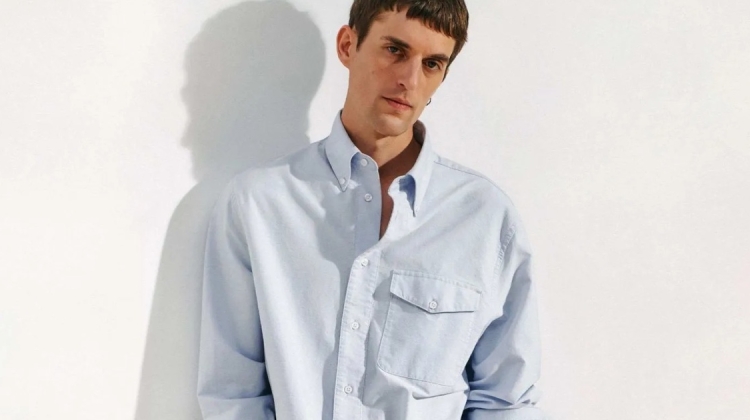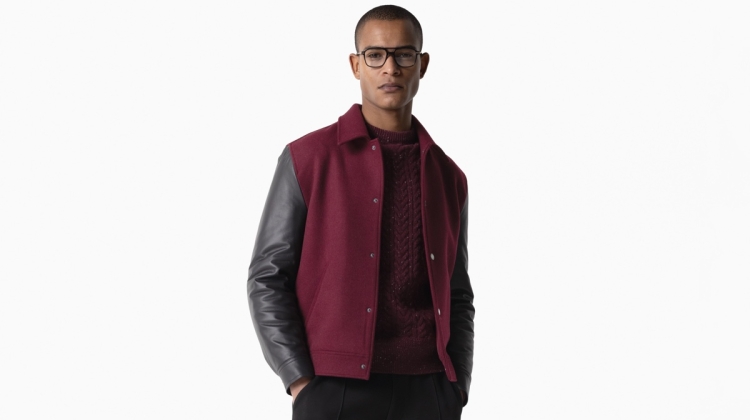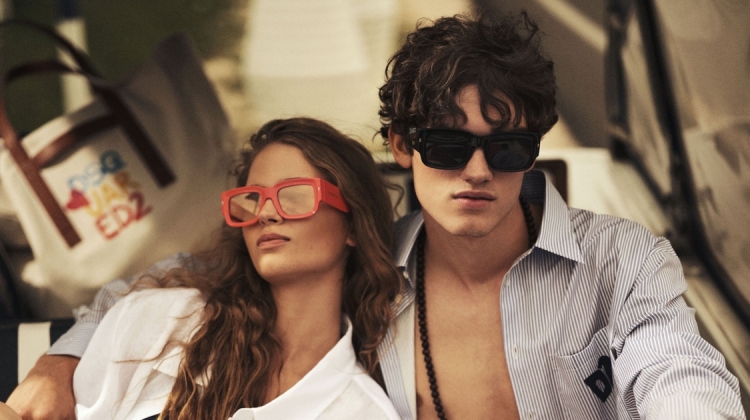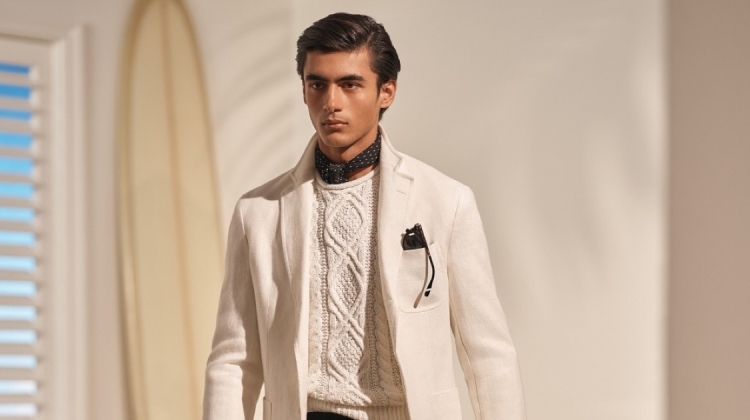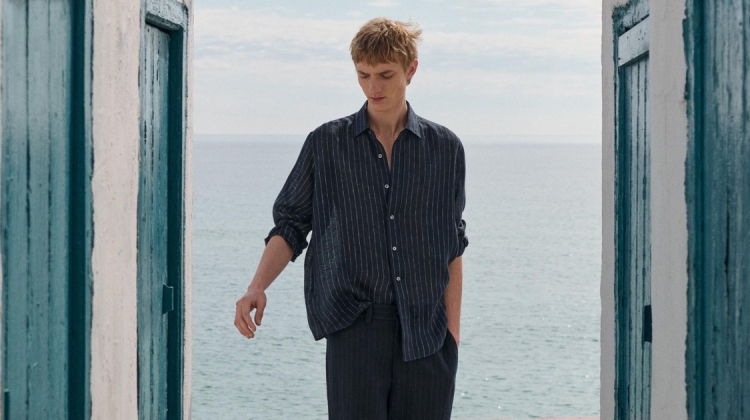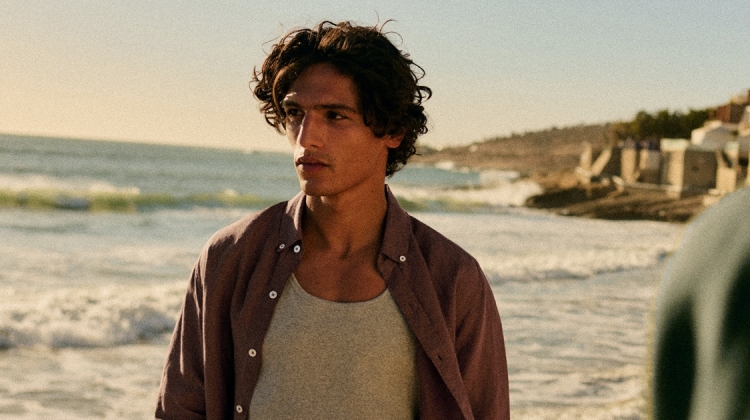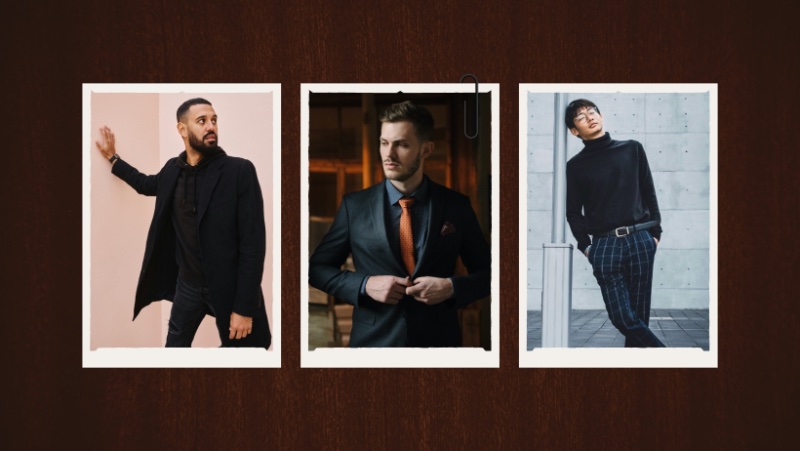
Navigating men’s dress code types can be complex, as each occasion demands a specific style and level of formality. From the pinnacle of elegance in white tie to the relaxed nuances of casual wear, understanding these dress codes is essential for making the right impression.
Dress Code Types for Men
Each dress code, be it business formal, semi-formal, cocktail attire, or smart casual, has its own rules and expectations. The key lies in understanding the nuances of each—from the choice of suit and shirt to the selection of shoes and accessories.
Beach Formal
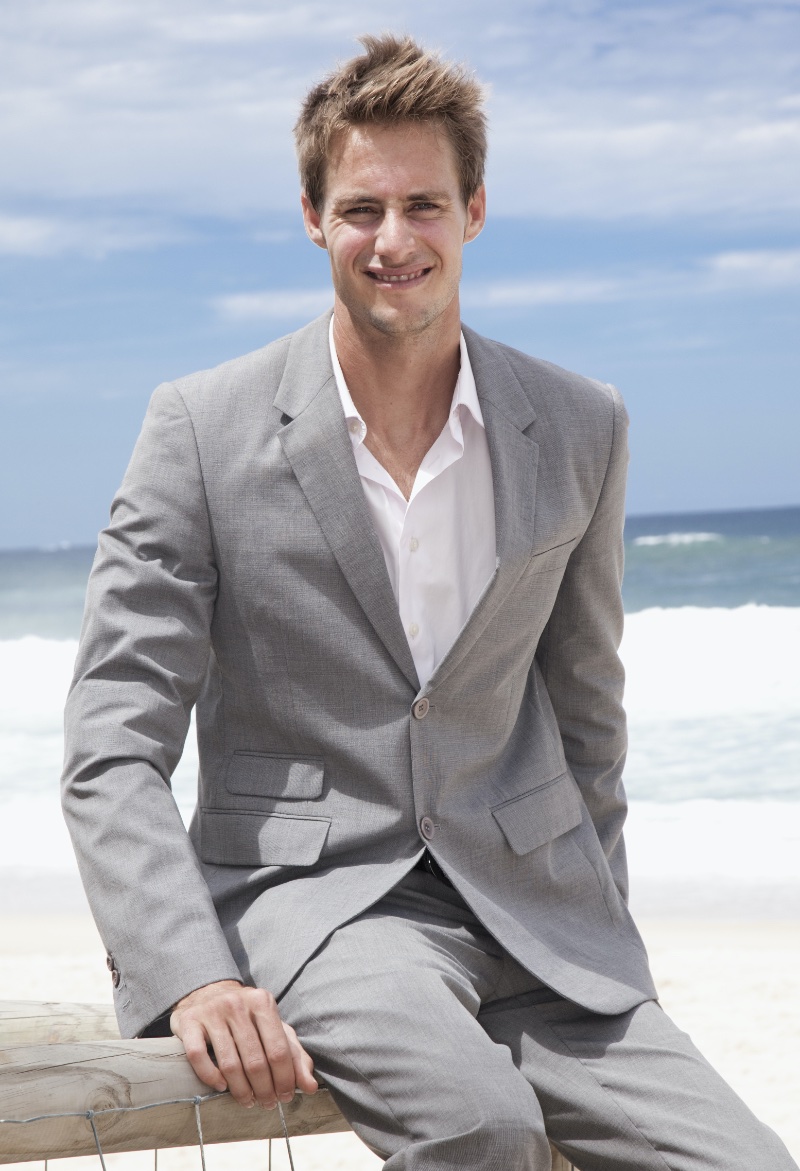
Beach formal attire is designed for elegant events in a beach setting, like beach weddings. It strikes a balance between formal wear and appropriate beach attire.
This could include a lightweight, breathable linen suit or a crisp, light-colored blazer paired with dress pants. With the sand in mind, footwear, such as stylish sandals or loafers, should be chosen.
The key to formal beach attire is maintaining an elegant look that respects the beach’s casual, natural setting.
Black Tie
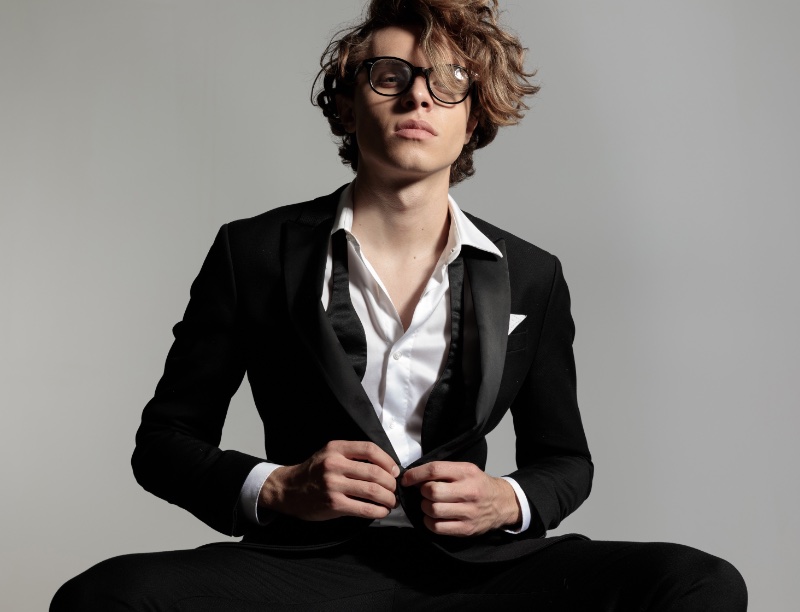
Black tie, often the pinnacle of formal attire for many men, is typically reserved for evening events. The standard black tie attire includes a white dress shirt, black bow tie, evening waistcoat or cummerbund, and a dinner jacket (tuxedo) with black oxfords or patent leather footwear.
In contrast, the stroller or Stresemann is the daytime version, a relaxed form of the morning dress. It features a suit jacket paired with a French-cuff dress shirt and black dress shoes or boots.
Black Tie Optional
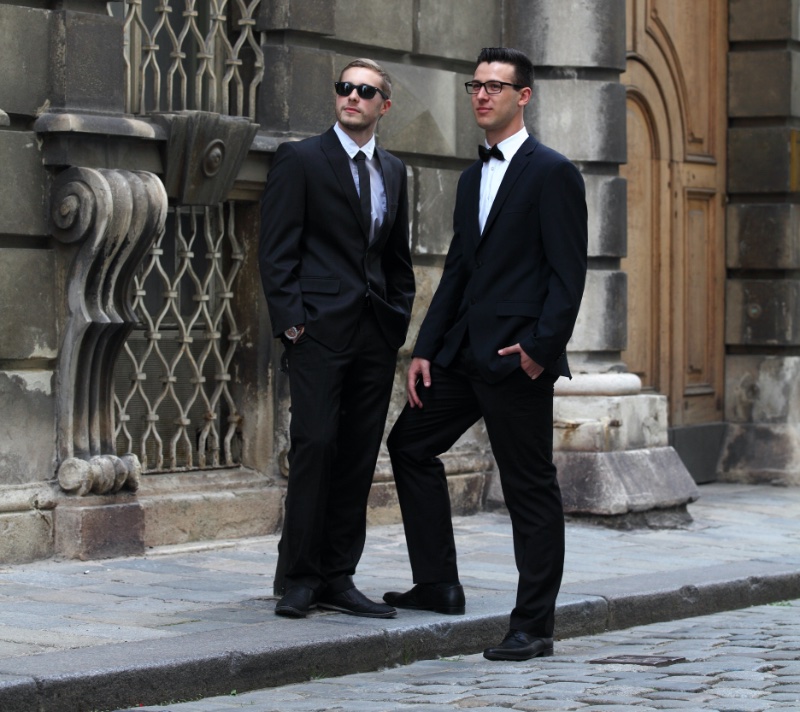
Black tie optional, also known as black tie invited, allows guests to choose between a full black tie and a slightly less formal but still elegant option. This could mean a traditional tuxedo or a dark, elegant suit with a tie.
It offers flexibility, allowing guests to dress comfortably in their preferred style while adhering to the event’s formal nature.
Creative Black Tie
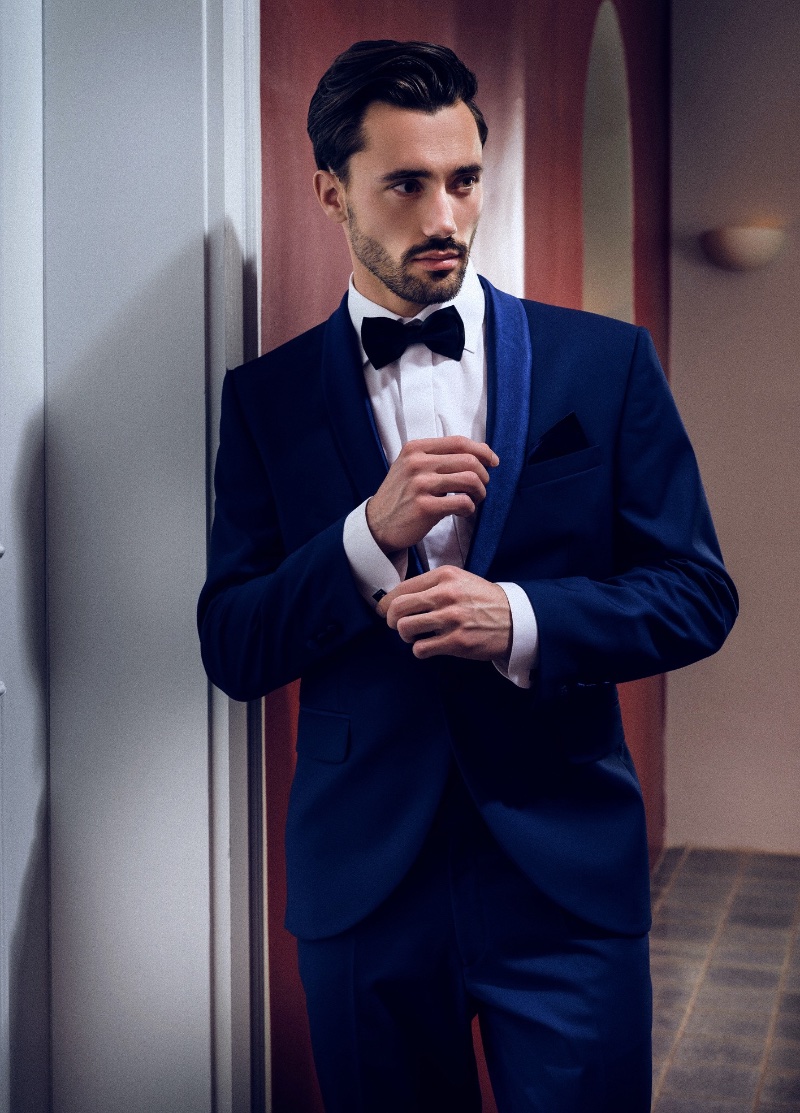
Creative black tie offers an opportunity to inject personal style into traditional black tie attire. It’s about maintaining the formal framework of a tuxedo or dinner jacket but adding unique or trendy touches.
This could mean a tuxedo in an unusual color, a patterned bow tie, or a stylish pocket square. It’s ideal for events that call for formal wear but are open to a touch of creativity and individual expression.
Business Casual

Business casual dress for men offers a more relaxed approach to professional dressing, allowing for personal style within a work-appropriate framework. It forgoes the need for a suit jacket and tie, focusing instead on a button-up shirt, trousers, and leather shoes.
The essence of business casual lies in the flexibility of color and pattern choices. Unlike traditional business attire, there’s no strict requirement to match a jacket and trousers. Instead, the emphasis is on creating a cohesive look through harmonious combinations, like pairing chinos with a dark sweater or a blazer with dark jeans.
Business Formal Attire

Business formal attire is a staple in professional environments like banking, law, and business sectors. For men, this dress code typically involves a two or three-piece matched suit, including a suit jacket, dress shirt, and trousers.
Completing the look, a tie and matching dress shoes are essential, embodying the essence of professionalism, whether for a meeting or a job interview.
Casual Dress
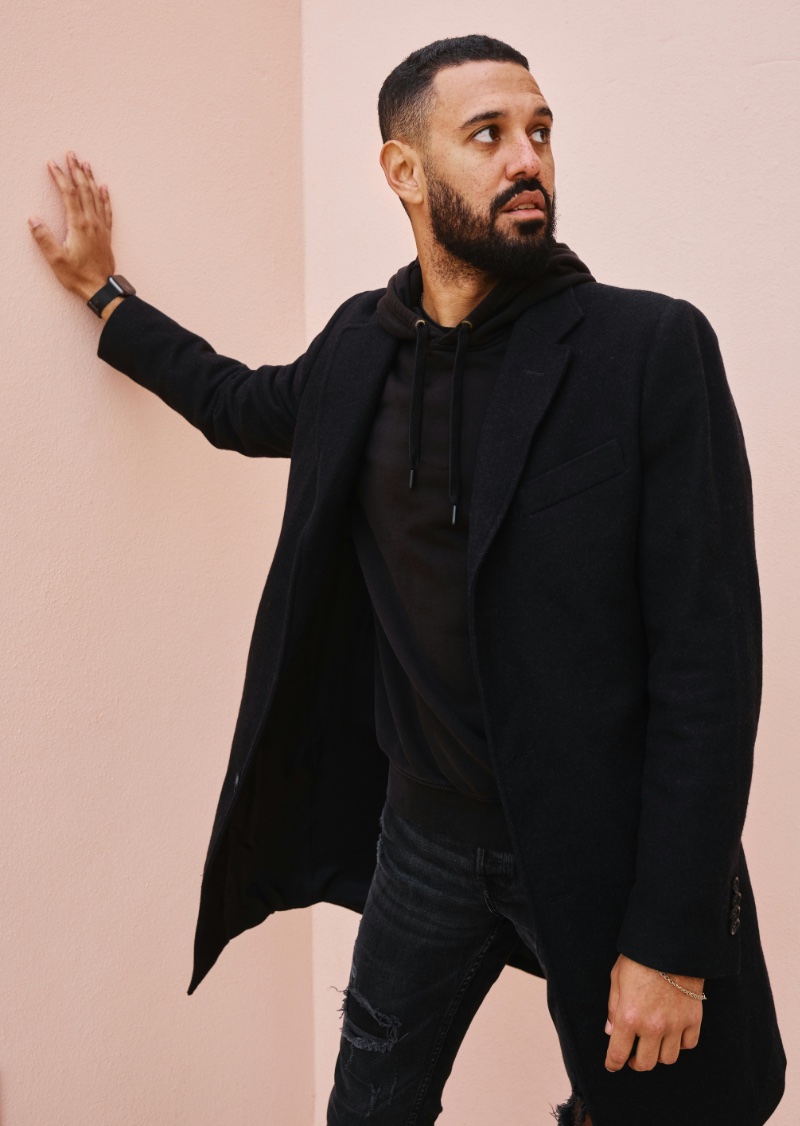
Casual dress is the most relaxed and personal of dress codes, ideal for everyday activities like running errands or hanging out with friends. It’s flexible, with no fixed rules, and depends mainly on personal style.
Nowadays, casual attire often includes jeans or khakis paired with polo shirts, button-ups, or solid T-shirts. T-shirts are frequently layered with blazers or jackets and accessorized to elevate the overall look.
Athleisure, a blend of athletic and leisure wear, has become an increasingly popular aspect of casual attire, even finding acceptance in some workplaces and semi-formal events.
Cocktail Attire
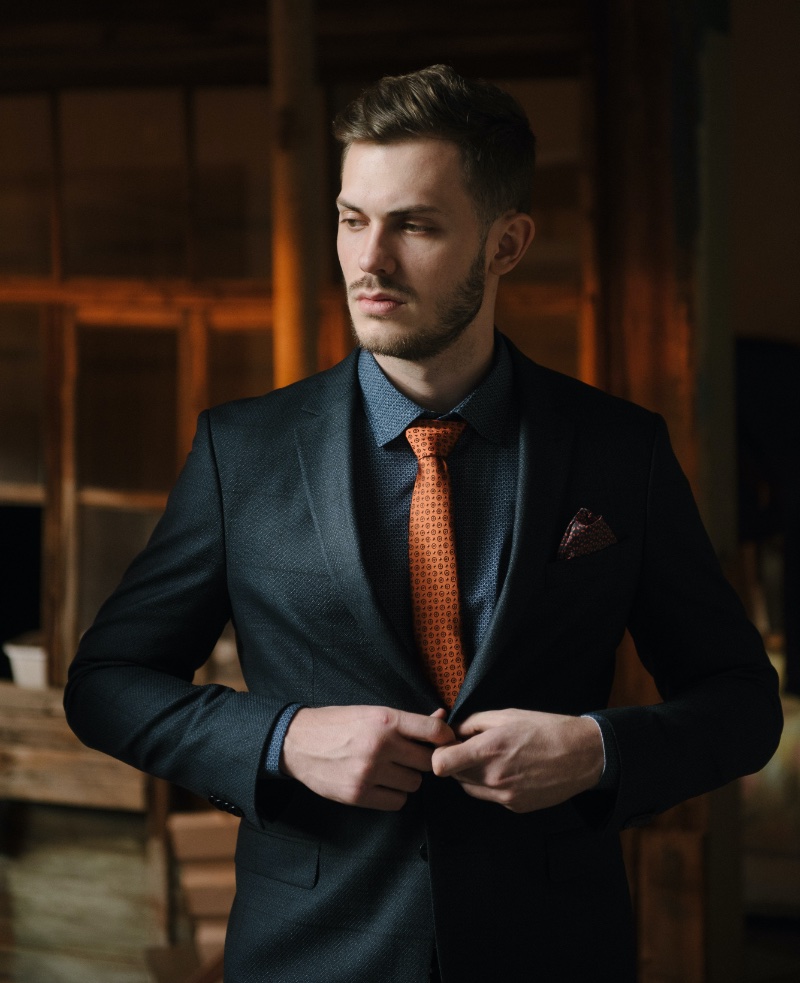
The cocktail dress code for events, typically in the evening, requires attire a notch above the standard work suit. A more stylish and contemporary suit is ideal for these occasions.
Embracing modern fashion trends, a slim-fitting dark suit with a sleek sheen finish can be perfect for a cocktail suit. This selection signifies a shift from the conventional to a more sophisticated and fashion-forward realm of men’s fashion.
To complete the cocktail look, pair your suit with polished shoes, a dress shirt, and, optionally, a tie. This ensemble strikes the right balance between formal and fashionable.
Dressy Casual
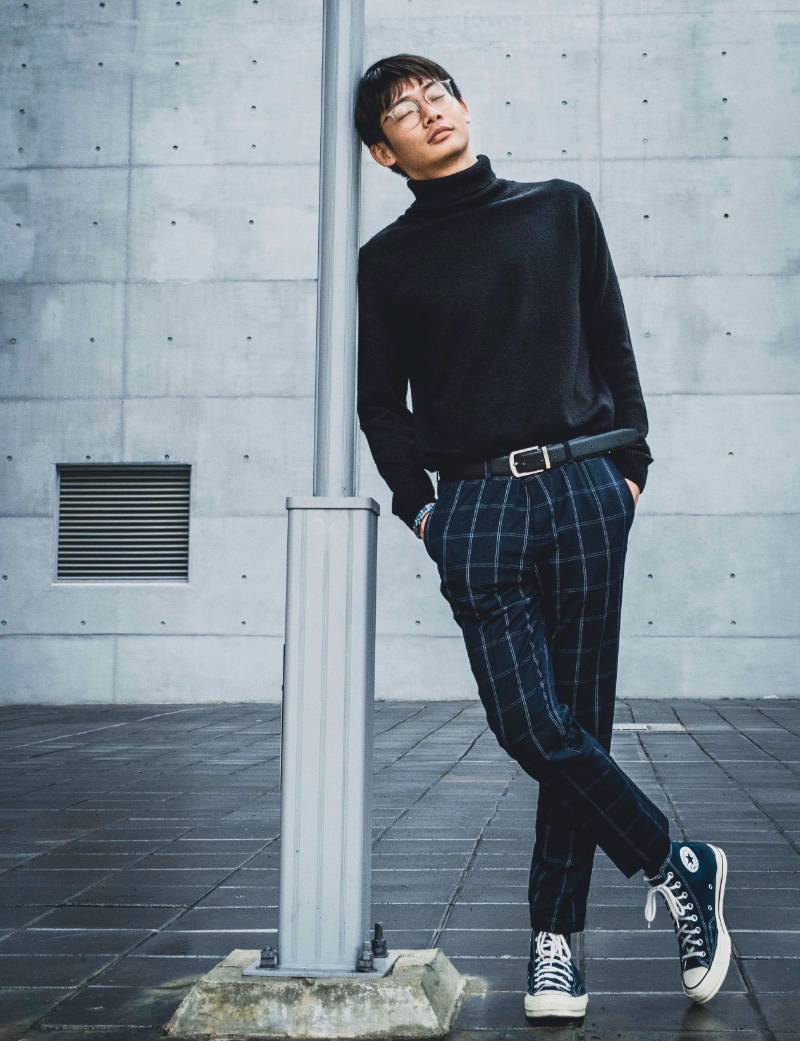
Dressy casual, a versatile dress code, merges the comfort of casual wear with the elegance of more formal attire. It’s perfect for events that call for a polished look without the formality of a suit or evening wear.
For men, dressy casual could mean pairing dark jeans or chinos with a button-down or smart polo shirt. Adding a blazer can elevate the outfit, providing a more refined edge.
Footwear is also essential; options like loafers, brogues, or clean sneakers can complete the look. The key is to balance casual and dressy elements to create a stylish yet relaxed ensemble.
Festive Attire
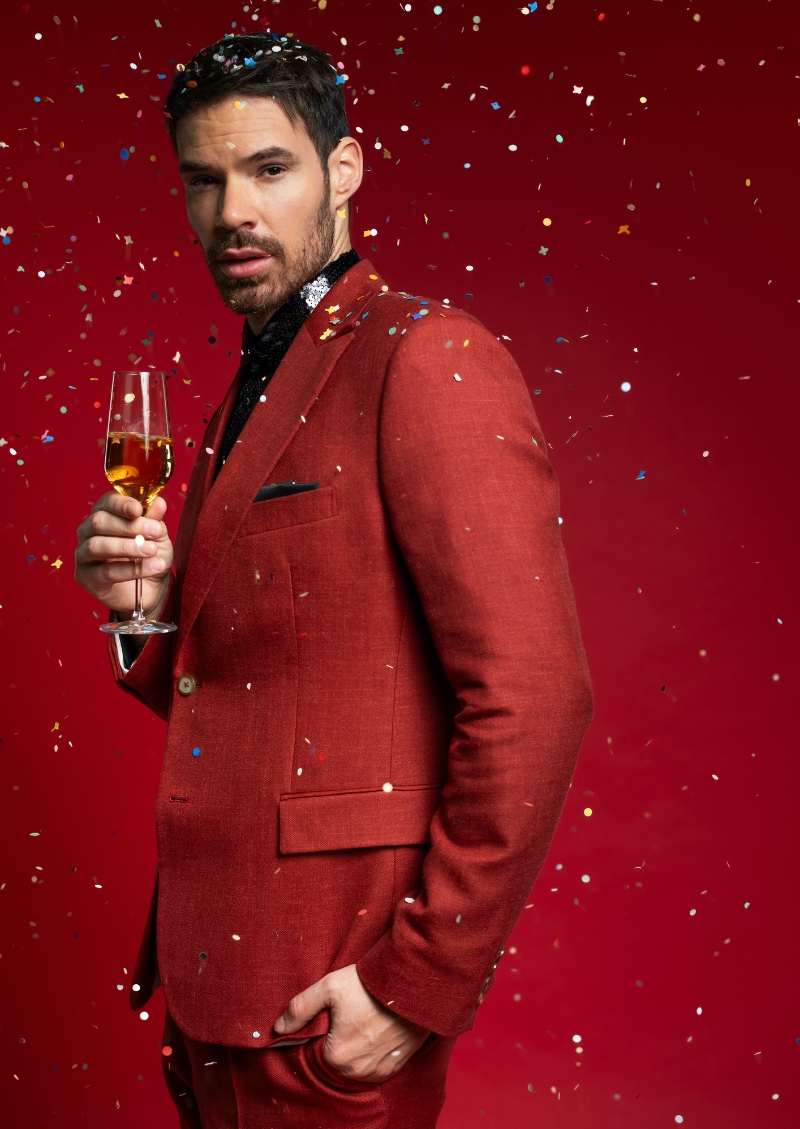
Festive attire is a dress code that combines formal elements with a playful, celebratory twist. It is often chosen for holiday parties or special occasions. This dress code encourages more freedom with colors and patterns, allowing for a more personal and joyous expression of style.
Holiday dressing can mean adding a vibrant tie, a brightly colored shirt, or a suit with a subtle pattern to the usual formal or semi-formal attire. Accessories also play a crucial role, with festive-themed cufflinks or pocket squares adding a touch of whimsy to the ensemble.
Formal Dress Code
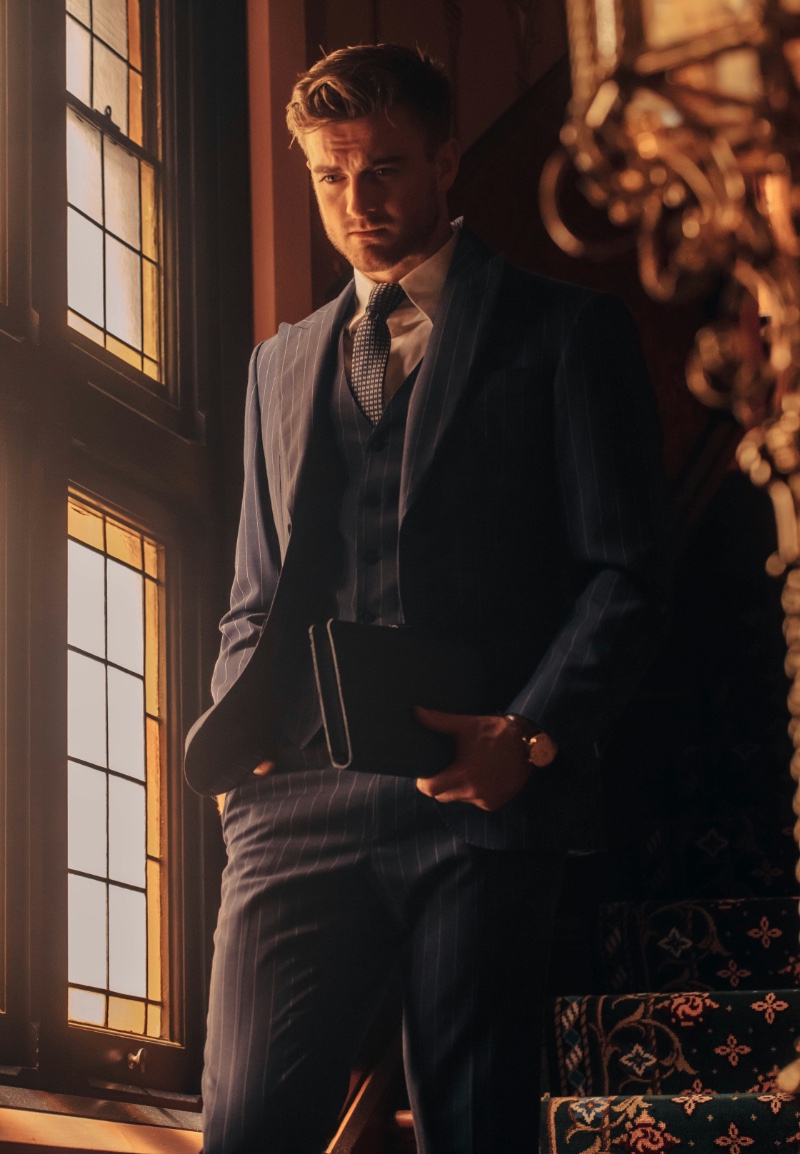
Formal dress for men is often linked with professional environments such as corporate meetings and offices. It’s also the appropriate choice for solemn occasions like funerals, serving as respectful funeral attire, and for significant events like graduations.
A well-tailored suit in dark colors like black, charcoal, or navy is essential to perfect the formal look. Pair this with a classic shirt in standard colors such as white or blue.
While the temptation to experiment with bold patterns or colors might arise, reserving such choices for less formal affairs is advisable. The ensemble is completed with a tie and a pair of polished black leather shoes, preferably timeless styles like derby shoes or oxfords, encapsulating the formal dress’s respectful and polished ethos.
Semi-Formal Attire
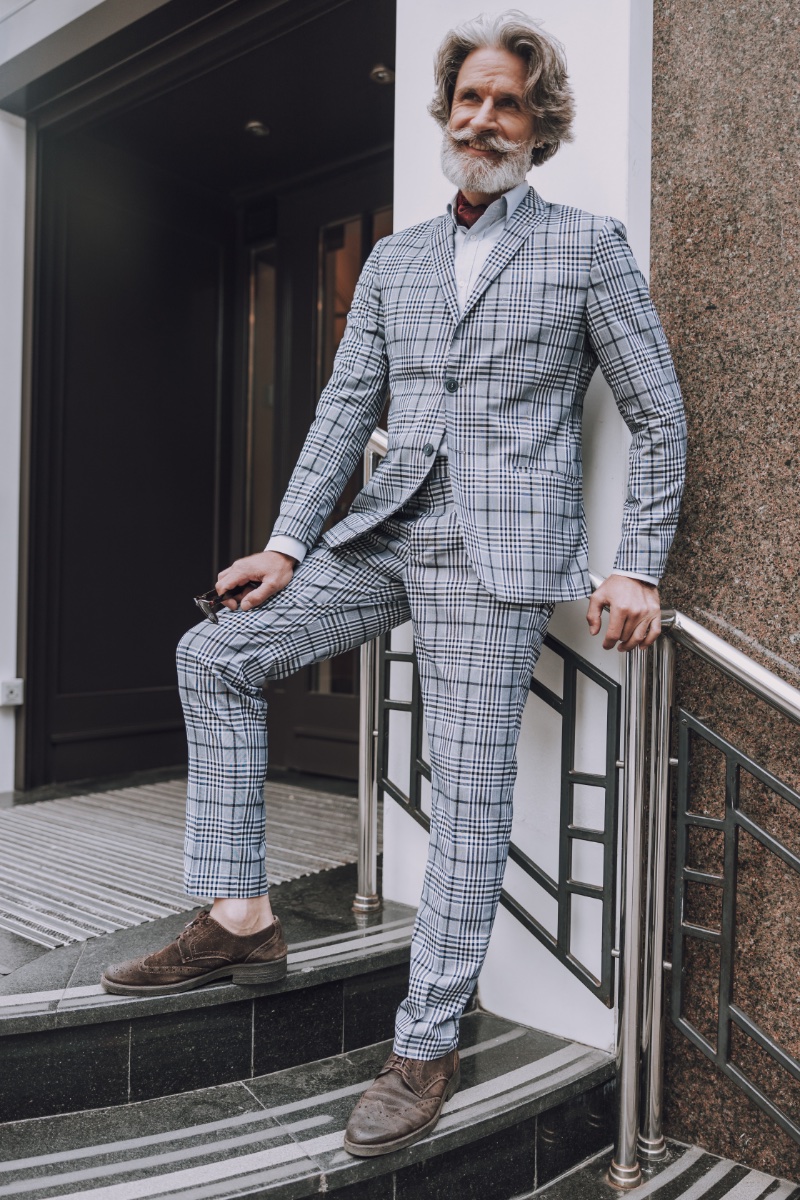
Semi-formal attire strikes a delicate balance between formal elegance and casual ease. It is popular for events requiring sophistication without the complete formality of black or white tie dress codes.
This dress code is versatile and suited for various social gatherings, from dinner parties to weddings. For men, semi-formal typically involves a suit and tie, offering more color and pattern flexibility than strictly formal attire.
Darker suits are classic, but lighter colors or subtle patterns can also be appropriate, especially in daytime or summer events. The outfit is usually completed with a dress shirt, a well-chosen tie to add a personal flair, and polished dress shoes like oxfords or loafers.
Smart Casual
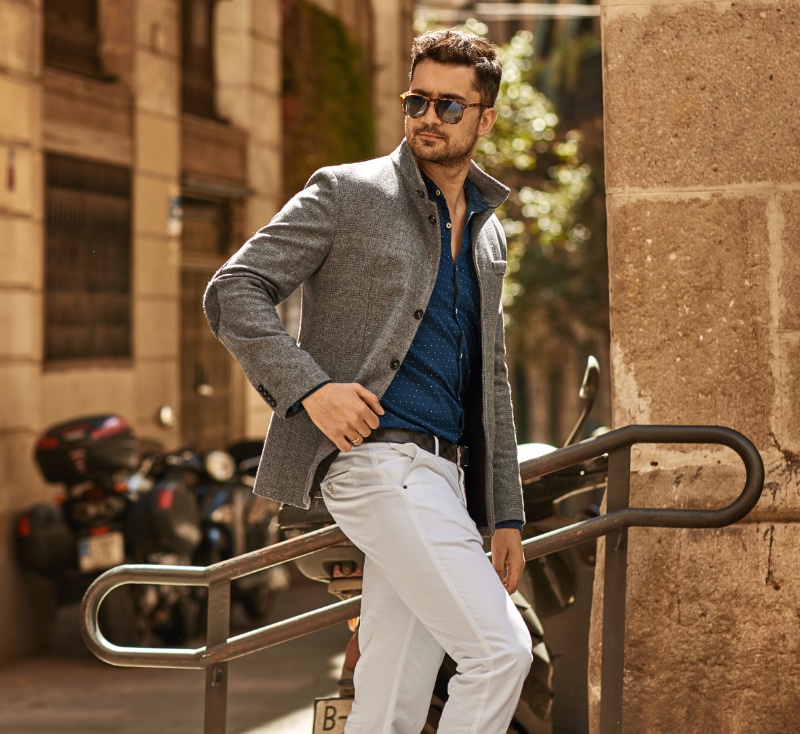
The smart casual dress code balances relaxed comfort and polished elegance. It’s a versatile style, suitable for various occasions, where the goal is to look casual yet noticeably refined compared to everyday attire.
Achieving this look involves combining everyday items with more sophisticated pieces, such as pairing jeans with a well-fitted t-shirt or polo shirt and a blazer or opting for chinos with a chambray shirt.
This dress code is particularly apt for settings like a first date, where you want to make a good impression without appearing overly formal.
White Tie
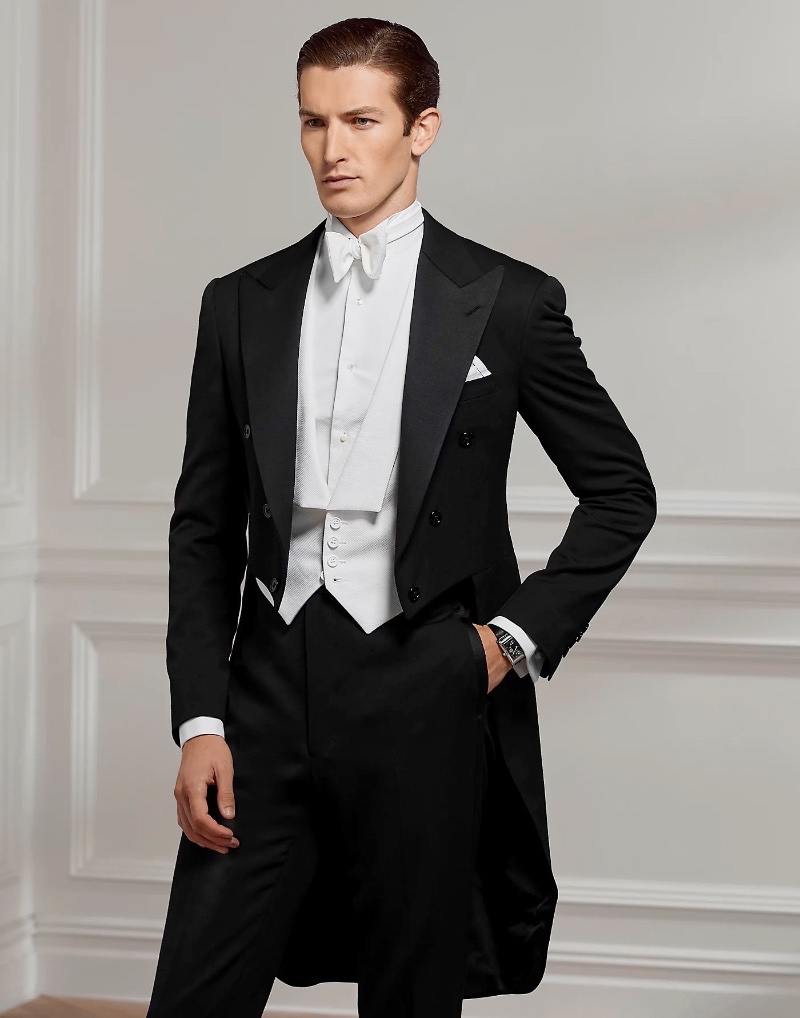
White tie, or full evening dress, is the zenith of men’s formal attire. It is designated for the grandest and most formal events, such as state dinners, award ceremonies, and high-society evening weddings.
This dress code exudes elegance and tradition, demanding precise elements: a black tailcoat over a white waistcoat, a white wing-collar dress shirt, and a white bow tie. The attire combines meticulously tailored black trousers and patent leather shoes.
Mastering Dress Codes for Every Occasion
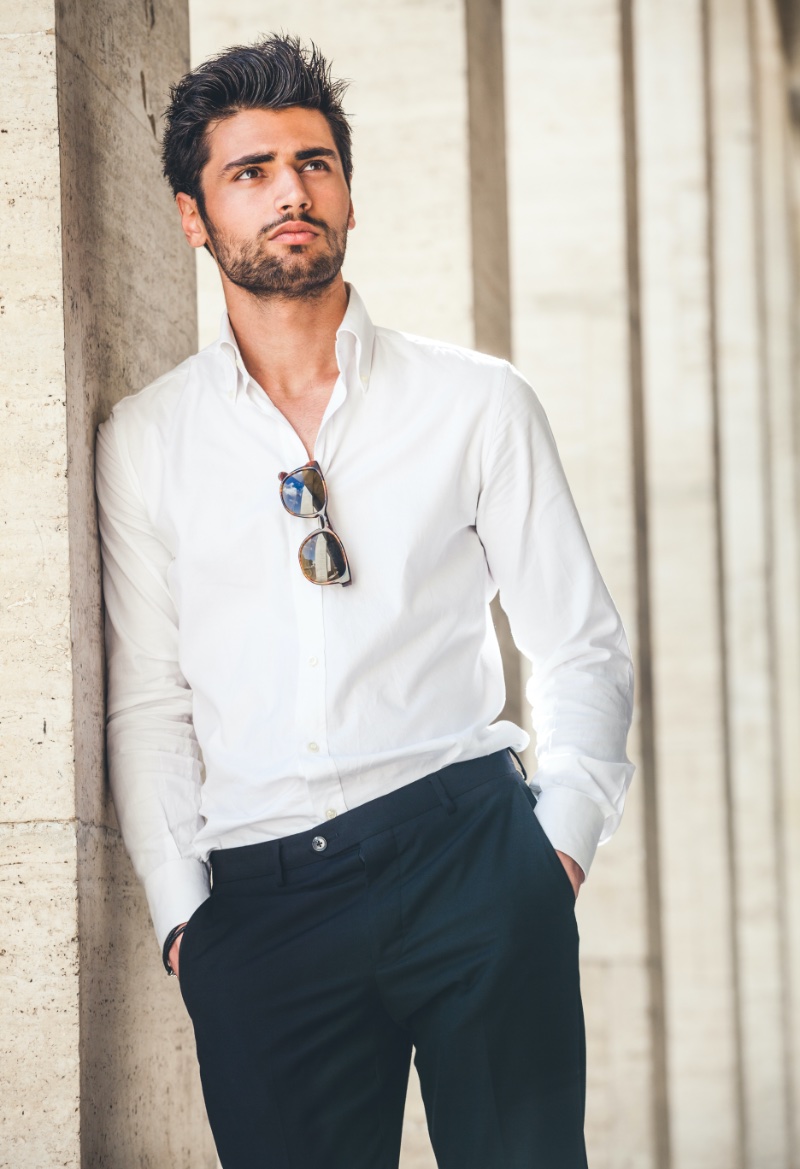
Mastering the art of dressing well for every occasion is about understanding the subtle differences between various dress codes and adapting your wardrobe accordingly. From formal events requiring a classic black or white tie to more relaxed settings suited for business casual or smart casual attire, each dress code is an opportunity to showcase your style and respect for the occasion.
